Cape Falcon Kayak update, fall 2011
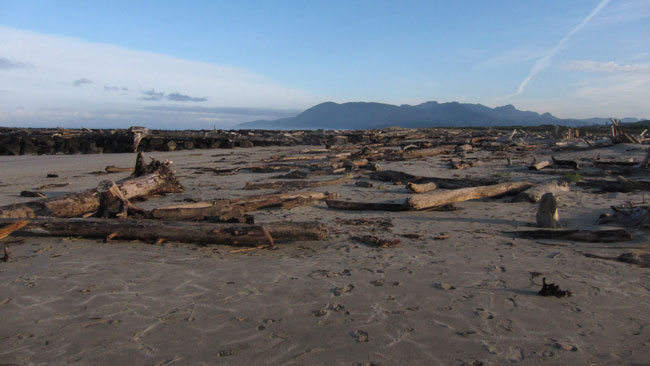
Like the salmon I've pursued this year, I'm beginning to realize that I too am an anadromous creature, whether it's building sea kayaks or using them, all spring and summer my focus is on the ocean, on food, and generally growing fatter for the coming winter. The salmon are eating, my business produces cash, the farm is growing like crazy, together we race toward the approaching equinox as the sun drops lower at an ever quickening pace. Autumn arrives. Significant swells crash into our beaches, pushing both me and the salmon into the estuaries. The salmon stop feeding, I'm done teaching, and the farm is overflowing with food. Too soon the fleetingly gorgeous month of September is gone, the wind shifts from the east to the south, the leaves turn yellow, the skies open up and pour, and people everywhere start to piss and moan.
Most people, but not this person.
As the rivers start the flow the salmon are called upstream by an ancient urge, I too recieve signals from deep in the limbic brain as I follow the fish up past the tidewater where my kayak-body changes, getting shorter, harder, more nimble. As the salmon get darker I get brighter, exchanging earthtone nylon for bright yellow polyethelene, trolling rods for spinning tackle, microbrew for pabst blue ribbon, farm fresh stir-fry for gas station burritos. Waterfalls and steep boulder gardens beckon, along with a seasonal cast of scumbags, deadbeats, and ne'er-do-well's. I am becoming a whitewater kayaker again.
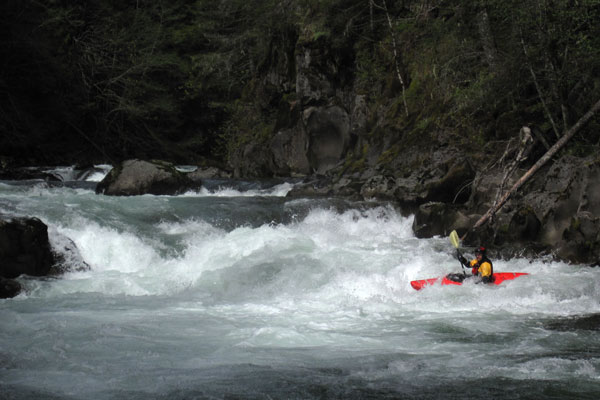
Before I transform into a complete troglodyte though, I wanted to take a few minutes to reflect on the this year and lay some plans for the year to come. To begin with, thank you to everyone who came out to build this year, you are the reason that Cape Falcon Kayak continues to thrive. Doing what I love for a living is a privledge, but the real blessing is all of the interesting people I'm fortunate enough to meet. The variety never ceases to impress me, and each person is a window into a world that I'd otherwise never visit. It's a lot of work building six kayaks in six and a half days, but I wouldn't trade it for anything and I'll continue to live up to my end of the bargain with kayaks of obsessive quality at the lowest prices I can possibly offer, and the probably crazy Cape Falcon warrantee, 5 years repair or replacement (with normal use). It's extremely rare that I have to warrantee a boat, but when I do you won't get a run-around. A shipper recently broke a students boat (in half) and I had a new boat on his doorstep in 14 days. That's how I like to do business.
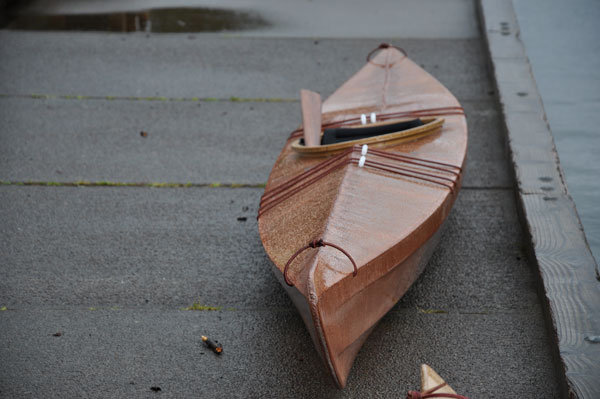
When it comes to kayaks I'm rarely satisfied with anything, so it comes as something of a surprise to realize that I'm now quite satisfied with the Cape Falcon lineup: West and East Greenland replicas, the F1, and the soon-to-be-renamed LPB. The Greenland kayaks I've chosen provide a decent paddling experience as well as being good rollers, which is often not the case in traditional hunting kayaks. The F1 remains the backbone of my business and if I were any sort of business person I'd put up a page with the countless rave emails I recieve from owners. The LPB as the newest member of the lineup has slowly won me over, despite my general disdain for longer kayaks, it's a nice boat to paddle and an excellent choice for those with the need for speed. Most importantly, I've built enough of all of these kayaks to be able to tweak them to match the individual paddlers weight, ergonomics, and paddling goals. Along with the standard lineup I've had the opportunity to work on some very cool projects this year, including a new version of the F2 double kayak that I built with a husband and wife who just took it on a trip in Canada. The kayak turned out amazing and I really wished I could have kept it I liked it so much. Looking into the future I am still hoping to get a 12 footer designed, but with the farm pulling so much energy, I find it harder and harder to find time for protoyping. Maybe it will happen this year!
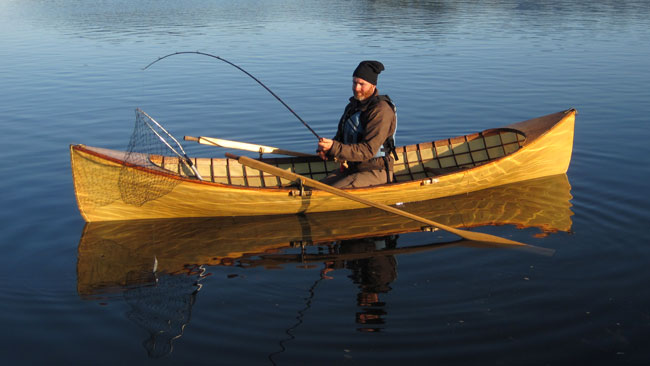
With my keen interest in fishing this year I've also revisited one of my most beautiful projects, the Adirondack Guide Boat. Halfway between a canoe and a rowboat, undeniably gorgeous, the Guideboat has proven itself an ideal craft for pursuing the wild salmon. While other guys are backing trailers into the water and firing up trolling motors, I am quietly sliding my thirty-pound boat through the grass and rowing effortlessly across the bay. Having watched countless daysailers rot on trailers, I have little patience for anything harder to deploy than a kayak. Weighing as much as a kayak but able to carry two people and some gear, it's a perfect boat for people who want to row but don't like the hassle of a full-sized rowboat. Owing to it's narrow waterline and superlight weight, it glides effortlessly under a light pull on the oars. It's a great boat for fishing, picnicing, or simply laying on the floorboards and staring up at the sky. All of this adds up to a seductive experience that is more than the sum of it's parts. Is it obvious that I love my guideboat? Leann and I just returned from our last Guideboat fishing trip of the year where we landed these two eleven-pound coho salmon, it was a great way to finish the season.
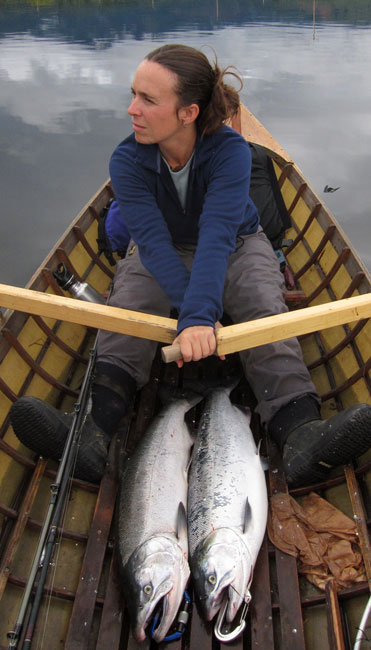
I'm proud to announce that Cape Falcon Kayak is now producing a limited number of Adirondack Guideboats. These new versions will incorporate everything I've learned from my two prototypes as well as real brass Guideboat hardware, unlike the cheaper pins and sockets on my protoypes. The real question is, how do I incorporate them into my business? I'd like to provide the opportunity for people to build, yet it's not practical to run full size classes. The solution I've come up with is to invite people on an individual basis to come build with me during the winter months. This is a much harder project than a kayak, and the materials costs are a lot more expensive. I'm charging $2900 for the build, and that may have to go up depending on how the first class goes. (translation: if you're the first you might get a better price) During this class we will spend ten days working side by side. These being the colder months, you can expect to work in heavy clothes, and you can also expect at least some mandantory steelhead fishing (the shop is on the river). I have a nice little yurt with it's own woodstove that I can rent you for someplace to stay at a reasonable price. Send me an email if you are interested in building or purchasing a new Guideboat. Cost for a new boat is going to be $4900, includes everything.
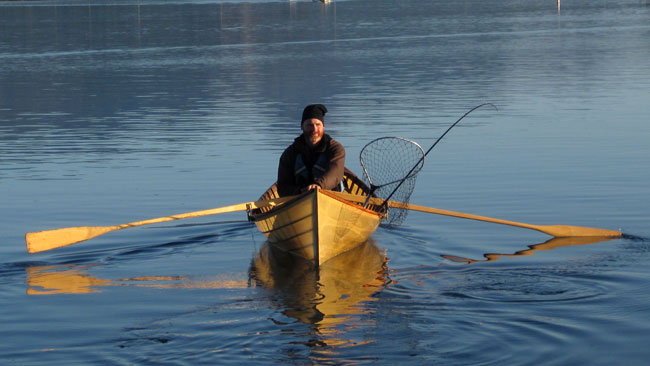
Right now I'm starting to plan my schedule for next years classes. I'll be posting the 2012 class schedule at the end of October so if you have any suggestions or requests get them to me now. As usual, registration will open at 9am on January 1st. This year anyone who registered later than 9:02 didn't get into a class. If you register at 8:59 you get pushed to the back of the line. I know that's all a bit crazy, but there is nothing I can do about it and this is the only system I can think of to make things fair. (exceptions can be made for special circumstances) New for the coming year, for anyone who tried to get into a class this year but couldn't, you can register a day early. The general plan is to build Guideboats until January then I'll probably teach a class in the Seattle area, (possibly Port Townsend), and a class in Portland sometime in the late winter months (Feb, March). Once the weather warms up a bit, classes at the shop start at the end of April. I will teach one class in April, one class in May, two classes in June, two classes in July, and two classes in August. That's sixty spaces total, about as much as I can do in a year and still retain a shred of sanity.
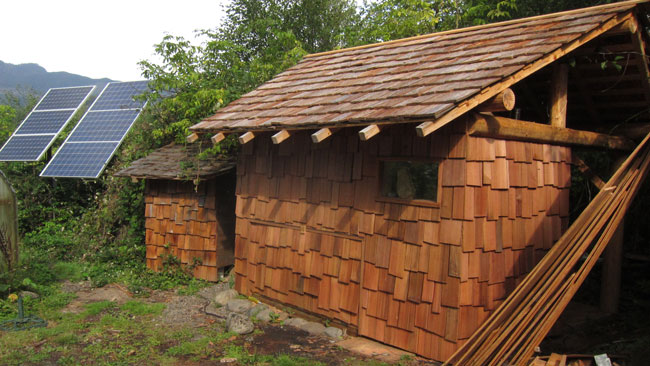
photo of my Japanese inspired bathouse, getting closer to finished every day!
Moving on from the making of cash to the liquidation of it, our organic farm continues of grow. We now supply two farmers markets and a sixty family, seven month CSA. Ginger, my partner in the venture and dear friend is hard at work, even as I write this, putting the labor into our labor-of-love. Irrigation, greenhouses, actual houses, the off-grid electricity and hot water systems, basically if it needs to be built it's my job. Ginger, however, is the gardening diva who fills all that empty infrastructure with life every year. Managing the farmwork, the website, the CSA, the markets, two interns, and an ever revolving crew of live-in volunteers, her drive and focus are admirable and quite neccesary to maintain any sort of cashflow from an occupation that pays little to nothing. The reality of local organic small farming is that it's almost impossible to make a living off of it. Big Ag is only profitable because they mass produce monocrops, heavily subsidised by the federal govenment. The real costs are externalized in the form of phosphate, nitrate, herbicide and pesticide pollution, dead soil, and food that ultimately contains much less nutrition. It should be obvious that poisoning the planet to feed the people is a stupid thing to do, but with nearly every key USDA office stacked with ex Big Ag executives, we aren't exactly headed toward national policy changes, which is unfortunate because in the fossil fuel scarce future it simply won't be practical to turn natural gas into nitrate fertilizer, or ship an apple halfway across the planet! Localizing our food supply is going to become essential in the next twenty years. Reducing energy consumption, closing waste loops, feeding people healthy food so they stay healthy, we need a food revolution! That's why Gin and I started the farm and called it R-evolution Gardens. The only problem being the absolutely pitiful wages. I've watched Gin work 14 hours a day 7 days a week for the last 8 months and the reward for that punishment is going to be barely surviving the winter. I'm sharing this because it's important for people who believe in local food to also understand just how tenuous farming really is.
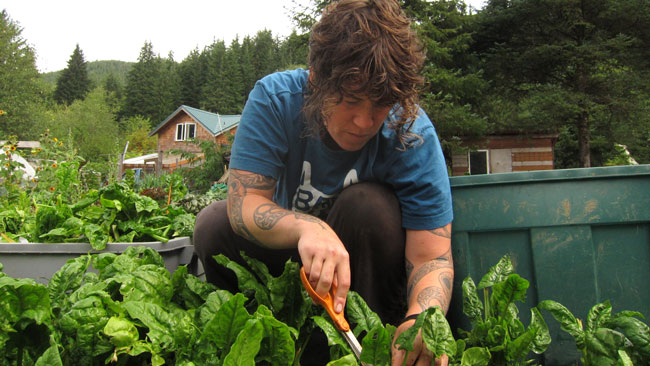
We all need to support our local farmer, go to the farmers market, plant your own garden, get involved with food! The more we are able to feed ourselves on a local level, the more insulated we are from an increasingly volitle world. Practical considerations aside, when you spend time with farmers you invariably find yourself drinking wine, eating delicious food together, and saying "I grew this!". Eating keeps you alive, but love and laughter are the reason to live in the first place. I look forward to sharing my passion for food and my passion for kayaks with you in the coming year. Sign up for a class, build a boat, and I'll show you around the farm!
back to Cape Falcon Kayak
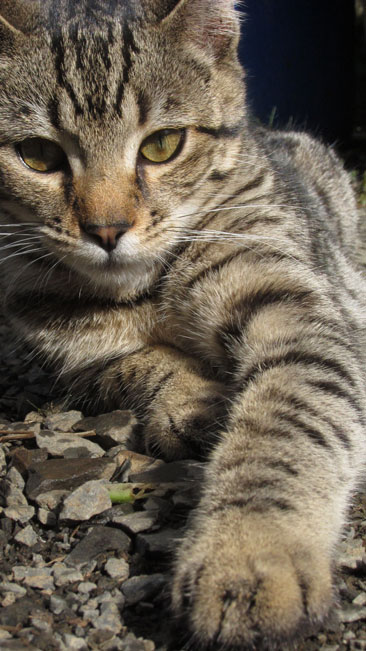
Bonus photo: my kitty M, now a teenager, I'm so in love with her!